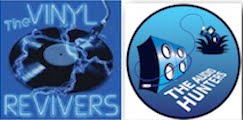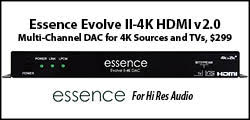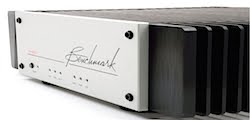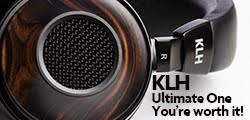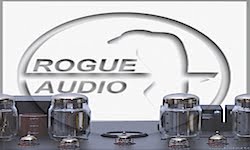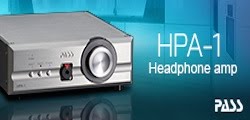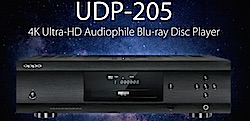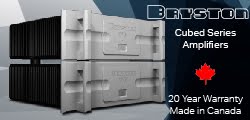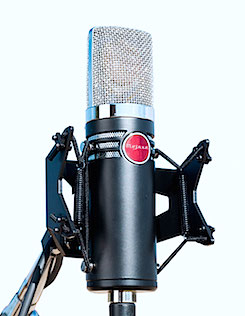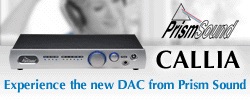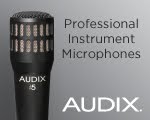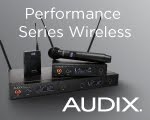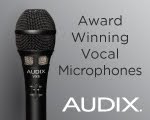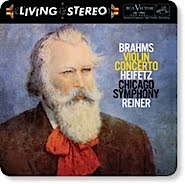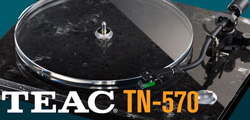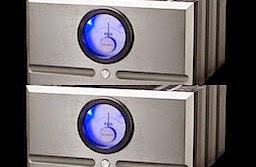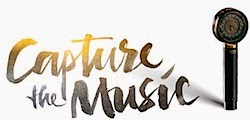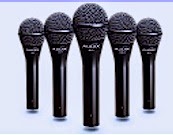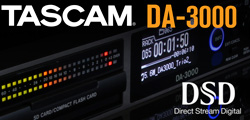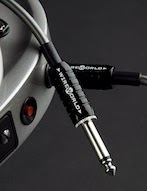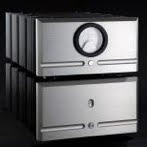by John Gatski
I have attended trade shows since the 1980s, big and small. From the mammoth Consumer Electronics Show (CES) to the big NAB broadcast technology extravaganza, the musician-gear focused NAMM show and numerous small, but hyper-focused, video and audio shows. As a publishing veteran of nearly 25 years, I like the buzz associated with seeing the new stuff and interacting with the dealers, manufacturers and end users at a trade show.
As much as I like the big expos — with all the royal trimmings — in big trade show towns like Vegas, I have always had a soft spot for the small audio shows. Not only do you get to see new hi-fi products, but you often get a chance to hang out, one on one, with the guy who designed the gear, the dealers who sell it and the fellow kindred spirits who share that fanatical audio equipment passion.
Case in point is the Washington, DC-based Capital Audiofest, that was held at the Rockville Crowne Plaza in Rockville, MD last July 8-10 — practically right in my back yard.
This show now fills a huge audio show void — in that there were no audio conventions or trade shows for the audiophile community in DC. Despite being one of the most affluent areas in the country with a healthy population of audio enthusiasts, folks here had to go to shows elsewhere to get their gear-gawking fix.
Getting on board
I had always hoped that a small, dedicated audio show would someday make its way to the DC area (I even contemplated doing one a few years ago). When I discovered the Capital Audiofest was being planned for its second annual show late last winter, I quickly called Gary Gill, owner of the show, and asked him how I could help.
I told Mr. Gill that, like him, I believed a thriving audio trade show, even on a small scale, is good for DC, and I offered my services. After all, I have been involved in various aspects of trade show planning for many years, at various publications and as partner with various associations.
Since I had struck up an acquaintance with Gary only a few months months before the show opened, my role was limited in the 2011 CAF preparations, but I helped him secure some giveaway items (Benchmark Media DAC1 and Essential Sound Products power cord). I also did a bit of promotion on EAN to help draw interest among potential attenders, dealers, manufacturers and service providers.
As much as I like the big expos — with all the royal trimmings — in big trade show towns like Vegas, I have always had a soft spot for the small audio shows. Not only do you get to see new hi-fi products, but you often get a chance to hang out, one on one, with the guy who designed the gear, the dealers who sell it and the fellow kindred spirits who share that fanatical audio equipment passion.
Case in point is the Washington, DC-based Capital Audiofest, that was held at the Rockville Crowne Plaza in Rockville, MD last July 8-10 — practically right in my back yard.
This show now fills a huge audio show void — in that there were no audio conventions or trade shows for the audiophile community in DC. Despite being one of the most affluent areas in the country with a healthy population of audio enthusiasts, folks here had to go to shows elsewhere to get their gear-gawking fix.
Getting on board
I had always hoped that a small, dedicated audio show would someday make its way to the DC area (I even contemplated doing one a few years ago). When I discovered the Capital Audiofest was being planned for its second annual show late last winter, I quickly called Gary Gill, owner of the show, and asked him how I could help.
I told Mr. Gill that, like him, I believed a thriving audio trade show, even on a small scale, is good for DC, and I offered my services. After all, I have been involved in various aspects of trade show planning for many years, at various publications and as partner with various associations.
Since I had struck up an acquaintance with Gary only a few months months before the show opened, my role was limited in the 2011 CAF preparations, but I helped him secure some giveaway items (Benchmark Media DAC1 and Essential Sound Products power cord). I also did a bit of promotion on EAN to help draw interest among potential attenders, dealers, manufacturers and service providers.
From my perspective, a small, close-knit audio show that is done right, like the CAF, brings a sense of community to those with like-minded interests and allows the companies and dealers to do a bit of business — without busting their annual promotional budget.
Gary took over the trade show in 2010 from its humble beginnings with a few local retailers, manufacturers and a swap-meet for tube gear; he has since doubled its size in just one year. The success of CAF 2011 shows that the local audio geeks had a pent-up demand for such an event. Judging by the attendance and number of dealers and manufacturers represented at the 2011 show, the Capital Audiofest did not feel small. Close to a 1,000 people came through the many rooms at the Crowne Plaza hotel, and it was pretty darn busy the entire three days.
Well-supported by business
More than 75 companies (manufacturers, dealers and service providers) were represented at the show, and even the Everything Audio Network was there. I set up a hospitality/listening suite in one of the smaller rooms, just enough room for a Pass Labs/Oppo/Westlake Audio playback system, a few peripherals — and some wine and snacks.
In my experience, these small shows, like CAF, allow the vendors to easily connect with the guys and gals who ultimately buy the gear. Local dealers, such as JS Audio, and companies such as McIntosh, Integra, Audience, Polk and others said they sold products at the show and garnered many more potential prospects for future buying. Products on display included amps, speakers, preamps, tube gear, turntables, CDs, records, power cables, interconnects, and modified reel-to-reel tape machines. Lots of goodies for audiophiles to see and hear.
Well-supported by business
More than 75 companies (manufacturers, dealers and service providers) were represented at the show, and even the Everything Audio Network was there. I set up a hospitality/listening suite in one of the smaller rooms, just enough room for a Pass Labs/Oppo/Westlake Audio playback system, a few peripherals — and some wine and snacks.
In my experience, these small shows, like CAF, allow the vendors to easily connect with the guys and gals who ultimately buy the gear. Local dealers, such as JS Audio, and companies such as McIntosh, Integra, Audience, Polk and others said they sold products at the show and garnered many more potential prospects for future buying. Products on display included amps, speakers, preamps, tube gear, turntables, CDs, records, power cables, interconnects, and modified reel-to-reel tape machines. Lots of goodies for audiophiles to see and hear.
CAF's Gary Gill and DAC1 Winner Gerald Wong
These small audiophile shows also allow for more intimate room interaction. Hundreds of attenders come into the EAN hospitality suite, two to five at a time, and listened to my one of my reference setups, as if I were a vendor demoing new gear. (My hottest gear, in terms of attender interest included the Pass XA30.5 Class A MOSFET amp, Oppo BDP-95 universal player, Westlake LC8.1 speakers, the pro/audiophile TASCAM DVRA-1000 high-res PCM/DSD hard drive recorder/player and the built-in-Mexico ATI ADAC — a digital A-D/D-A/SRC that displays word length and sample rate when connected to a digital output.)
These small audiophile shows also allow for more intimate room interaction. Hundreds of CAF attenders came into the EAN hospitality suite, two to five at a time, and listened to my one of my reference setups, as if I were a vendor demoing new gear.
Overall, people who attended as interested audiophiles and as vendors, told me that they were pleased with the show. McIntosh Eastern Sales Rep. Christopher Smith said that he was glad he came to the CAF, and that room visitors “showed a lot of interest” in the latest Mac products (myself included).
Phil Abish, an avid DC-area audiophile, said he was impressed with the growth of the Capital Audiofest from its first event in 2010. “This year's audio fest, especially given the state of the economy, was really good. I spent double the amount of time between Saturday and Sunday and can honestly say I could have spent a few more hours,” he explained. “While I looked at the list of scheduled exhibitors prior to July, I found it bigger in person that it seemed online. There was a much bigger variety of equipment, exhibitors, exhibitor types — i.e. dealer, manufacturer, review website, DIY room, and DIY looking to become a manufacturer.”
Looking forward to the next show
As we head into the fall, EAN is gearing up to attend the home-theater focused CEDIA show and impending 2012 NAMM and CES shows, but I won’t forget about the small shows. Rocky Mountain Audio Fest and Head-Fi are coming up, and of course, our own 2012 Capital Audiofest will be held again in the same location next summer. I am sure it will be a bit bigger next year, and hopefully, will expand to include some how-to sessions for audiophiles and home recording buffs. It will still have that nice, small-show feel.
From my perspective, a small, close-knit audio show that is done right, like the CAF, brings a sense of community to those with like-minded interests and allows the companies and dealers to do a bit of business — without busting their annual promotional budget. See you at the next show!
Phil Abish, an avid DC-area audiophile, said he was impressed with the growth of the Capital Audiofest from its first event in 2010. “This year's audio fest, especially given the state of the economy, was really good. I spent double the amount of time between Saturday and Sunday and can honestly say I could have spent a few more hours,” he explained. “While I looked at the list of scheduled exhibitors prior to July, I found it bigger in person that it seemed online. There was a much bigger variety of equipment, exhibitors, exhibitor types — i.e. dealer, manufacturer, review website, DIY room, and DIY looking to become a manufacturer.”
Looking forward to the next show
As we head into the fall, EAN is gearing up to attend the home-theater focused CEDIA show and impending 2012 NAMM and CES shows, but I won’t forget about the small shows. Rocky Mountain Audio Fest and Head-Fi are coming up, and of course, our own 2012 Capital Audiofest will be held again in the same location next summer. I am sure it will be a bit bigger next year, and hopefully, will expand to include some how-to sessions for audiophiles and home recording buffs. It will still have that nice, small-show feel.
From my perspective, a small, close-knit audio show that is done right, like the CAF, brings a sense of community to those with like-minded interests and allows the companies and dealers to do a bit of business — without busting their annual promotional budget. See you at the next show!
©All original articles on this site are the intellectual property of the Everything Audio Network. Any unauthorized use, via print or Internet, without written permission is prohibited.











